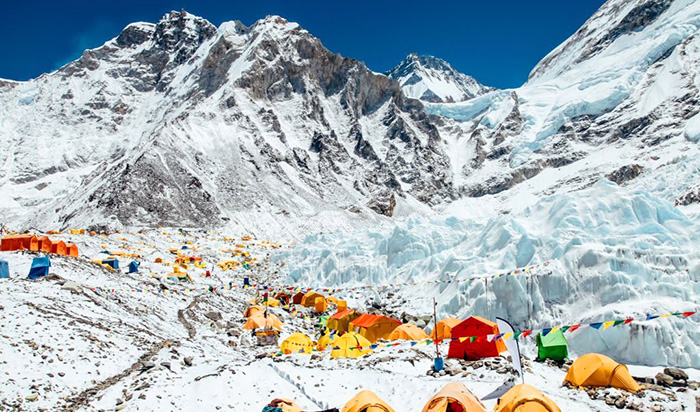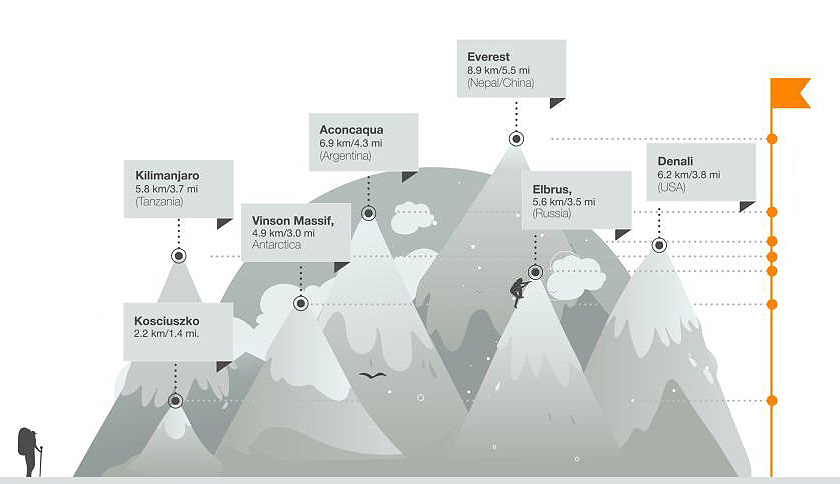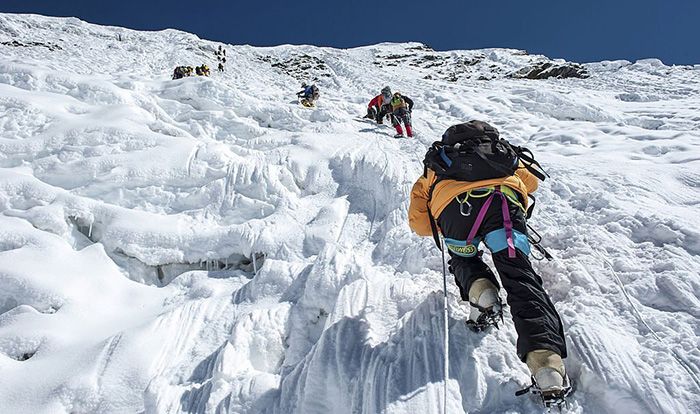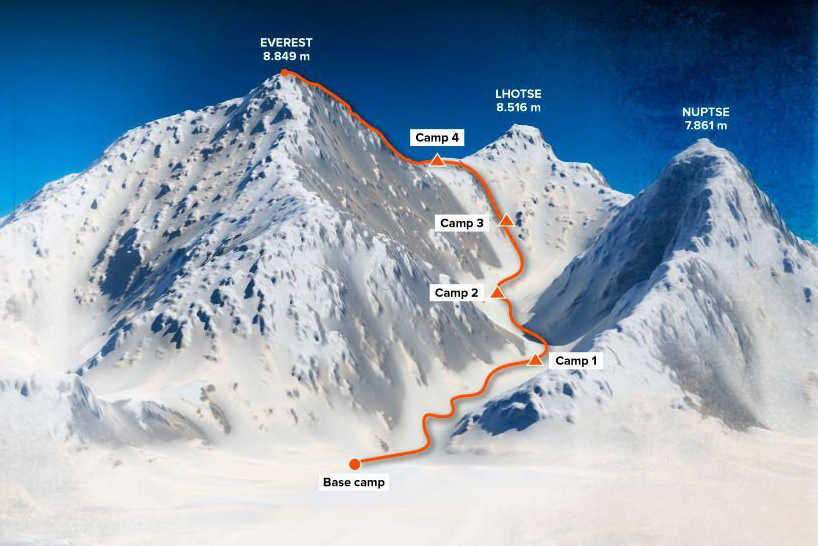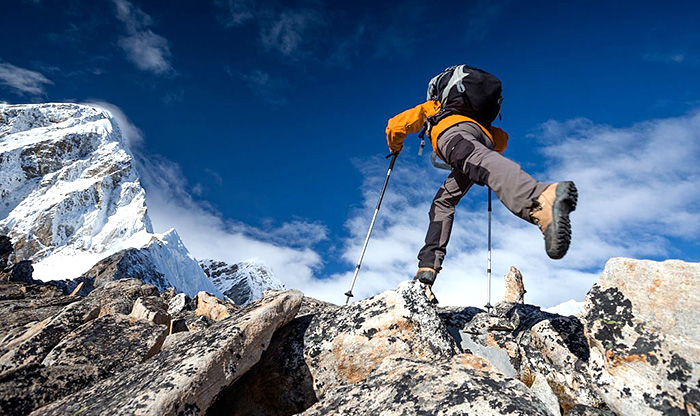Climbing Mount Everest is considered one of the most challenging and dangerous feats humans can undertake. The mountain’s sheer height, extreme weather conditions, and unpredictable terrain make it an immense challenge, even for the most experienced and skilled climbers.
But how hard is it to climb Mount Everest? This article will explain the various aspects of climbing Mount Everest and why it is such a difficult task.
| Property | Description |
| Elevation | 8848 meters (29,029 feet) Above Sea Level |
| Location | On the border between Nepal and Tibet (China) |
| Range | Himalayas |
| Difficulty Level | Extremely difficult and dangerous |
| Altitude Sickness | Common due to low oxygen levels |
| Temperature | Can drop below -40 degrees Celsius |
| Weather Conditions | Prone to high winds, snowstorms, and extreme colds |
| Terrain | Made up of rock, ice, and snow, with steep slopes, crevasses, and icefalls |
| Key Challenge | Acclimatizing to the Altitude |
| Cost | Can range from $30000 to $100000 or more |
| Success Rate | Around 4000 people as of 2021, 29% success rate |
Mount Everest is the highest mountain in the world, standing at 8,848 meters (29,029 feet) above sea level. It is located in the Himalayas on the border between Nepal and Tibet (China). Climbing the mountain requires significant physical and mental preparation and the right equipment and support team.
Even climbing Mount Everest base camp (EBC) is considered a challenge. But how hard is it to climb to base camp Everest? Climbing to Everest Base Camp is a challenging but achievable feat that does not require advanced mountaineering skills or experience.
The biggest challenge when climbing to EBC is the altitude, which can cause altitude-related symptoms such as headaches and fatigue. With the right preparation, including physical training, proper gear, and a reliable guide or porter, most people can complete the trek to Everest Camp.
The first successful ascent of Mount Everest was made by Sir Edmund Hillary of New Zealand and Tenzing Norgay of Nepal on May 29, 1953. Since then, thousands have attempted to climb the mountain, and around 4,000 people have reached the summit as of 2021.
However, the success rate is relatively low, and climbing Mount Everest remains a significant challenge for even the most experienced climbers. Please find below the factors that contribute to the difficulty of climbing Mount Everest:
Altitude
One of the primary reasons that climbing Mount Everest is so difficult is the altitude. As climbers ascend the mountains, the air becomes increasingly thin, making it harder for the body to function properly. At higher elevations, the air pressure drops, and less oxygen is available.
This can cause a variety of altitude-related illnesses, including Acute Mountain Sickness (AMS), High Altitude Pulmonary Edema (HAPE), and High Altitude Cerebral Edema (HACVE). These conditions can be life-threatening and require immediate medical attention.
To prepare for the altitude, climbers need to acclimatize slowly by spending time at different elevations to allow their bodies to adjust to the changing conditions. This process can take several weeks and requires significant patience and perseverance.
Extreme Weather Conditions
Another significant challenge when climbing Mount Everest is the extreme weather conditions. The mountain is located in a region prone to high winds, snow storms, and extreme cold temperatures.
These conditions can make climbing challenging, reducing visibility and making it harder to move around. Climbers need to be prepared for temperatures that can drop below -40 degrees Celsius and winds that can reach up to 200 miles per hour.
Unpredictable Terrain
The unpredictable terrain is also a significant challenge when climbing Mount Everest. The mountain is made up of rock, ice, and snow, and climbers need to navigate steep slopes, crevasses, and ice falls.
One of the most dangerous parts of the climb is the Khumbu Icefall, a mountain section where the glacier constantly moves and shifts. This area is known for its unstable iced blocks and large crevasses, which can open up without warning.
To navigate the terrain, climbers must have the right equipment, including specialized climbing gear, such as crampons, ice axes, and ropes. They must also be skilled in using this equipment and have experience climbing in high-altitude and extreme weather conditions.
Logistics
Another significant challenge when climbing Mount Everest is the logistical aspect of the expedition. Climbers need a support team that includes sherpas, cooks, porters, and medical staff.
They must also carry significant equipment, including food, water, and fuel. This equipment needs to be transported up the mountain, which can be time-consuming and labor-intensive.
Expedition Cost
The cost of climbing Mount Everest is also a significant challenge. The expedition can cost anywhere from $30,000 to $100,000, depending on the level of support required. This cost includes permits, equipment, guides, and other expenses. Many climbers must save for years to afford the expedition; some even take out loans to finance it.
Conclusion
Climbing Mount Everest is one of the most challenging feats a human can undertake. The altitude, extreme weather conditions, unpredictable terrain, logistical challenges, and cost make it a significant undertaking, even for the most experienced climbers. They must be well-prepared, experienced, and aware of the risks to increase their chances of a safe and successful ascent.

